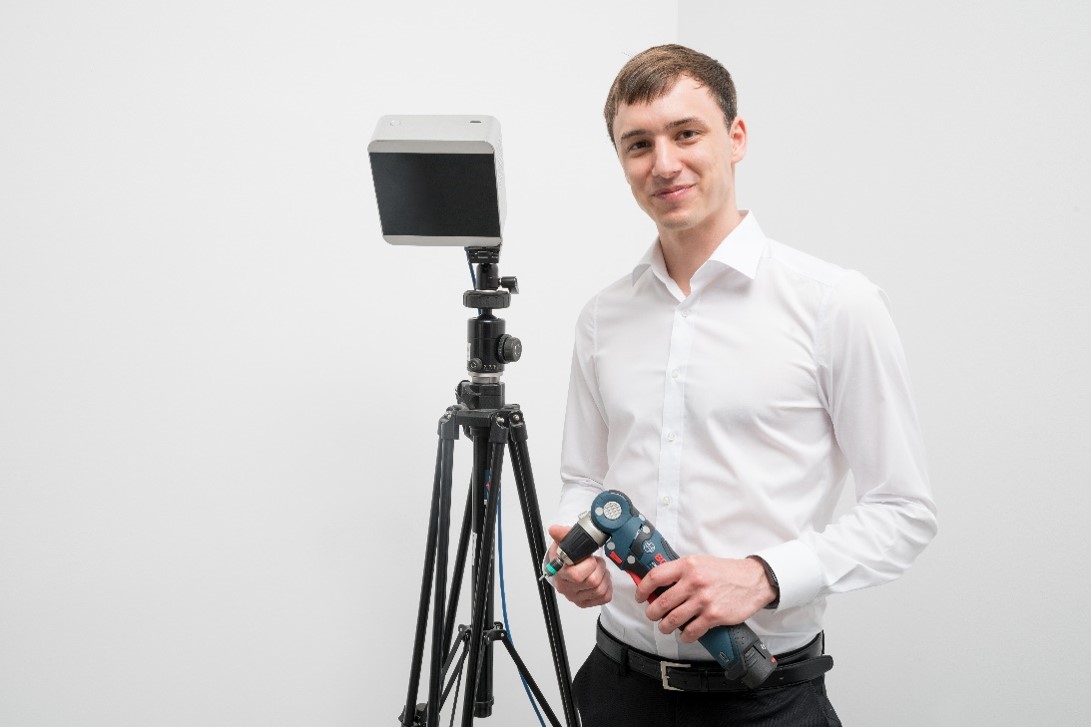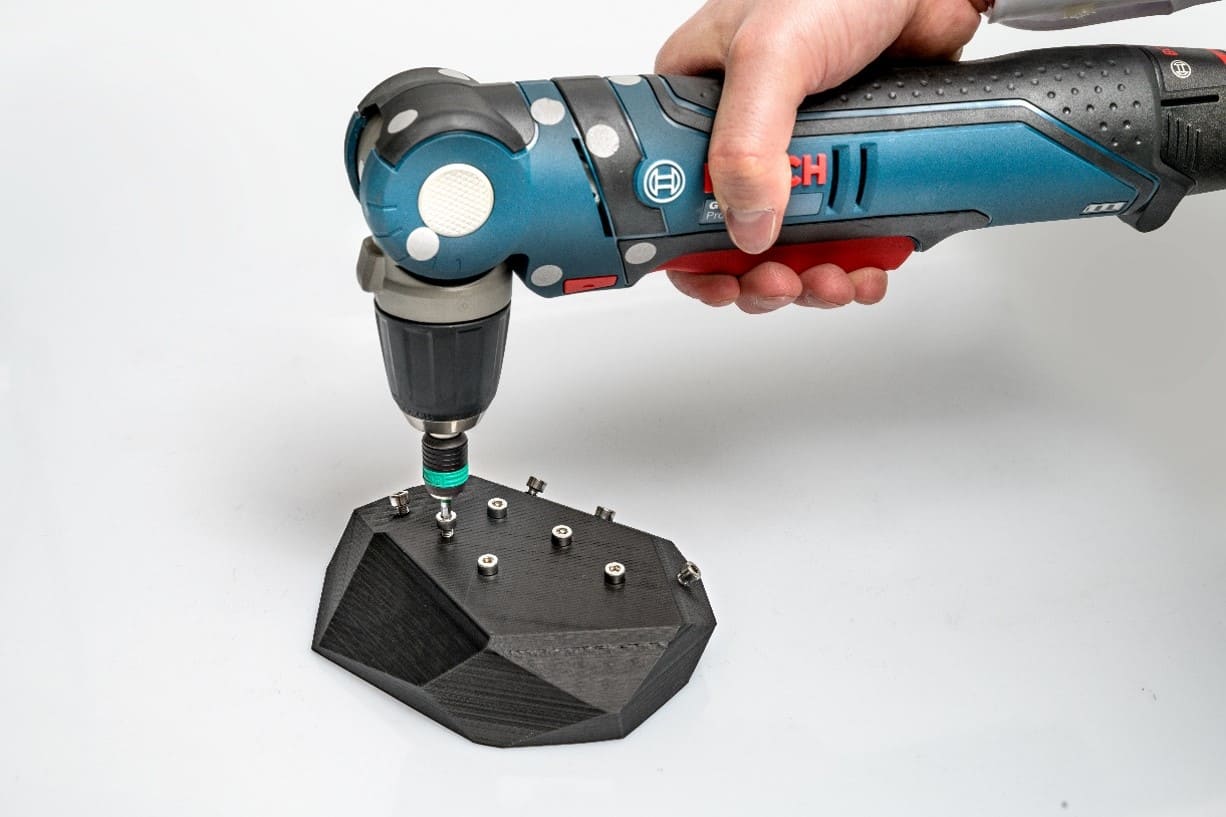
Human-machine interaction benefits from knowledge about objects, which the user interacts with. If a robot recognizes that the user has grasped something and is willing to take it over, the robot can react accordingly. If a tutorship system detects that the user is picking up the wrong object in the right work step, it can give more effective instructions. But even in passive assistance systems, which are used, for example, for the automatic documentation of performed work steps, object recognition is beneficial: has the operator fastened all safety-critical screws or has the screw been placed in the wrong place?
IRPose: millimeter-precise object localization
IRPose is a self-developed system for marker-based localization and pose recognition of objects. It uses retroreflective infrared markers - small stickers that can be placed on any object or tool. The IRPose camera system learns the distribution of the reflective markers in just a few seconds by moving and rotating the pasted object in front of the camera. IRPose provides a fully automated and millimetre-precise position and orientation determination of objects in real time.
Retrofittable, low-cost, simple
The advantage of these small retroreflective markers is that any object can be retrofitted. The objects do not have to be additionally equipped with complex and expensive sensors, power connectors or other interfaces.
 Fraunhofer Institute of Optronics, System Technologies and Image Exploitation IOSB
Fraunhofer Institute of Optronics, System Technologies and Image Exploitation IOSB 